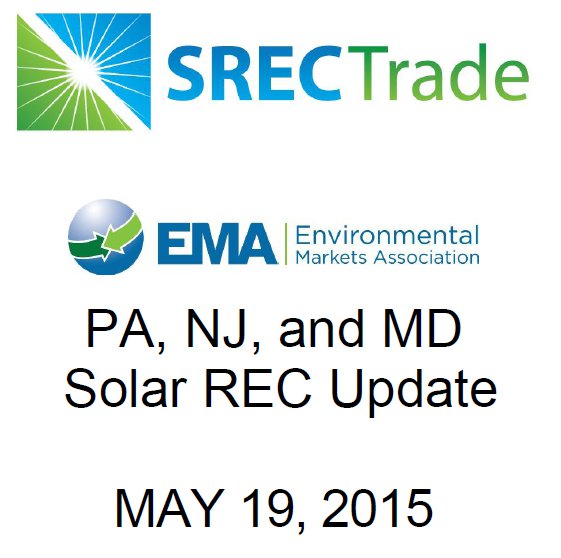The following post is a monthly update outlining the megawatts of solar capacity certified to create SRECs in the Solar REC markets that SRECTrade serves. All PJM data is based on the information available in PJM GATS as of the date noted. All MA data is based on the information provided by the DOER as of the date noted. This analysis does not include projects that are not yet registered and certified with the entities noted herein.
A PDF copy of this table can be found here.
Overview of PJM Eligible Systems Through 6/4/2015
There are 61,869 facilities registered in GATS as of 6/4/2015. See below for a more detailed breakdown.
There are 316 projects over 1 MW in capacity, representing 1,005.5 MW or 44.5% of the qualified capacity. The largest projects in PJM are concentrated in NC and MD. There are 50 projects that are 5 MW or larger. These make up 22.3% of all qualified capacity in PJM. The top 5 largest projects are listed below.
NJ Office of Clean Energy Estimated Installed Capacity Through 5/31/15
Overview of MA DOER SREC-I and SREC-II Eligible Systems
SREC-I Program
The Massachusetts SREC-I program was capped on June 30, 2014. As of 6/15/2015 the DOER reported that 6.7 MW of solar is still listed as Qualified but not operational. In total, 653.8 MW of capacity is listed as qualified, of which 647.1 MW is operational.
SREC-II Program
The SREC-II program opened on April 25, 2014. The program is broken in to Market Sectors. For a detailed overview of the regulations regarding SREC-II please visit here. As of 6/15/2015, 288.5 MW of capacity is currently qualified under the SREC-II program, but only 132.7 MW is operational.
Starting May 15, 2015 the DOER began publishing data showing generation units under review in the SREC-II Program. Total capacity under Review is 59.0 MW, of which 25.1 MW is operational.
How to Interpret The Capacity Table at the Top of this Post
The tables above demonstrate the capacity breakout by state. Note, that for all PJM GATS registered projects, each state includes all projects certified to sell into that state. State RPS programs that allow for systems sited in other states to participate have been broken up by systems sited in-state and out-of-state. Additional detail has been provided to demonstrate the total capacity of systems only certified for one specific state market versus being certified for multiple state markets. For example, PA includes projects only certified to sell into the PA SREC market, broken out by in-state and out-of-state systems, as well as projects that are also certified to sell into PA and Other State markets broken out by in state and out of state systems (i.e. OH, DC, MD, DE, NJ). PA Out-of-State includes systems sited in states with their own state SREC market (i.e. DE) as well as systems sited in states that have no SREC market (i.e. VA). Also, it is important to note that the Current Capacity represents the total megawatts eligible to produce and sell SRECs as of the noted date, while the Estimated Required Capacity – Current and Next Reporting Year represents the estimated number of MW that need to be online on average throughout the reporting period to meet the RPS requirement within each state with only that particular compliance period vintage. For example, New Jersey needed approximately 496.7 MW online for the entire 2013 reporting year to meet the RPS requirement with 2013 vintage SRECs only. SRECs still available from prior eligible periods can also impact the Solar RPS requirements. Additionally, the data presented above does not include projects that are in the pipeline or currently going through the registration process in each state program. This data represents specifically the projects that have been approved for the corresponding state SREC markets as of the dates noted.
Note: SREC requirements for markets without fixed SREC targets have been forecast based on EIA Report “Retail Sales of Electricity by State by Provider” through 2013. Projected SRECs required utilizes the most recent EIA electricity data applying an average 1.0% growth rate per forecast year. The state’s RPS Solar requirement is then multiplied by forecast total electricity sales to arrive at projected SRECs required. Projected capacity required is based on a factor of 1,200 MWh in PJM states and 1,160 MWh in MA, generated per MW of installed capacity per year.
Tweet










